Introduction
Organizations are looking for more regulated, cooperative, and effective alternatives to public and private blockchain models as blockchain technology advances. The Consortium Blockchain, a semi-decentralized blockchain system run by a number of reliable organizations, is among the most promising options.
This article will discuss the definition of consortium blockchain technology, its operation, its main advantages and disadvantages, and practical applications in a range of sectors.
What is a Consortium Blockchain?
A permissioned blockchain in which several pre-selected organizations share network control is called a consortium blockchain, sometimes referred to as a federated blockchain. Consortium blockchains are regulated by a group, guaranteeing shared responsibility and increased trust, in contrast to private blockchains run by a single business or public blockchains that are accessible to all.
Key Characteristics of Consortium Blockchains
- Permitted Access: Data can only be read or written by participants who have been chosen.
- Shared Governance: Several groups oversee the process of reaching a consensus and decide together.
- Consensus protocols such as RAFT and PBFT (Practical Byzantine Fault Tolerance) are frequently used in custom consensus mechanisms.
- Speed & Scalability: Provides a greater transaction volume than open blockchains.
- Transparency Among Members: For better cooperation, all consortium members have access to shared data.
How Consortium Blockchain Works
- Pre-Defined Participants: Access to the blockchain is provided to a collection of organizations.
- Consensus Mechanism: Transactions are only validated and approved by these authorized nodes.
- Smart Contracts: Used to automate corporate rules and agreements among participants.
- Data privacy: Members manage data access, only disclosing to the consortium what is required.
Advantages of Consortium Blockchain Technology
Efficient Collaboration
A shared ledger allows several companies to work together safely, minimizing data silos and enhancing communication.
Faster Transactions
The network can execute transactions faster than public blockchains since it has fewer known validators.
Greater Trust and Transparency
There is greater confidence among network participants because each participant is a well-known and respectable organization.
Cost-Effective
Consortium blockchains employ lightweight consensus algorithms, eliminating the need for energy-intensive mining.
Regulatory Compliance
Consortiums are able to put in place compliance procedures that are specific to industry rules.
Challenges of Consortium Blockchain
Governance Complexity
Multiple entities making decisions together can cause disagreements and hold-ups.
Limited Decentralization
Although consortium blockchains are more decentralized than private chains, they are still not completely accessible.
Onboarding and Trust
It might be difficult and require a lot of trust to get new organizations into the consortium.
Real-World Use Cases of Consortium Blockchain
Healthcare
- securely exchanging patient data between providers, insurers, and hospitals.
- improving pharma supply networks’ transparency.
Banking & Finance
- utilizing shared ledgers for cross-border payments and interbank settlements.
- detecting fraud by exchanging data together.
Supply Chain Management
- keeping track of products and confirming their origins from various suppliers.
- enhancing accountability and cutting down on logistical delays.
Legal & Compliance
- coordinating smart contracts between different legal entities.
- secure document validation and digital identity.
Government Services
- cooperative governance amongst several government agencies.
- open public records with common access restrictions.
Top Consortium Blockchain Platforms
| Platform | Description |
|---|---|
| Hyperledger Fabric | Open-source framework by the Linux Foundation, ideal for consortiums. |
| Corda | Enterprise-grade platform focused on finance and legal sectors. |
| Quorum | Permissioned version of Ethereum optimized for enterprise needs. |
| R3 | A blockchain consortium itself, powering Corda and financial networks. |
Consortium Blockchain vs Public and Private Blockchains
| Feature | Public Blockchain | Private Blockchain | Consortium Blockchain |
|---|---|---|---|
| Access | Open to everyone | One organization | Group of selected entities |
| Speed | Slower | Fast | Faster than public chains |
| Governance | Decentralized | Centralized | Federated (shared control) |
| Trust Model | Trustless | Requires trust | Trust among known parties |
| Use Case | Cryptocurrencies | Internal operations | Industry collaborations |
The Future of Consortium Blockchain
The use of consortium blockchain technology is growing faster due to the need for safe, effective teamwork. Important upcoming trends consist of:
- Industry-Specific Consortiums: Customized networks for supply chains, healthcare, finance, and other industries.
- Cross-Consortium Interoperability: The ability of several blockchain networks to communicate with each other without interruption.
- Integration of AI with IoT: Real-time data tracking and advanced analytics.
- Mainstream Enterprise Adoption: From Fortune 500 firms to SMEs, they are joining consortia led by the industry.
Conclusion
A perfect compromise between the control of private blockchains and the transparency of public blockchains is provided by consortium blockchain networks. Consortium chains promote innovation, operational effectiveness, and regulatory compliance by allowing several enterprises to work together on a single, secure ledger.
Consortium blockchains will be essential in determining the direction of safe digital collaboration in the future as companies depend more and more on multi-party ecosystems.




